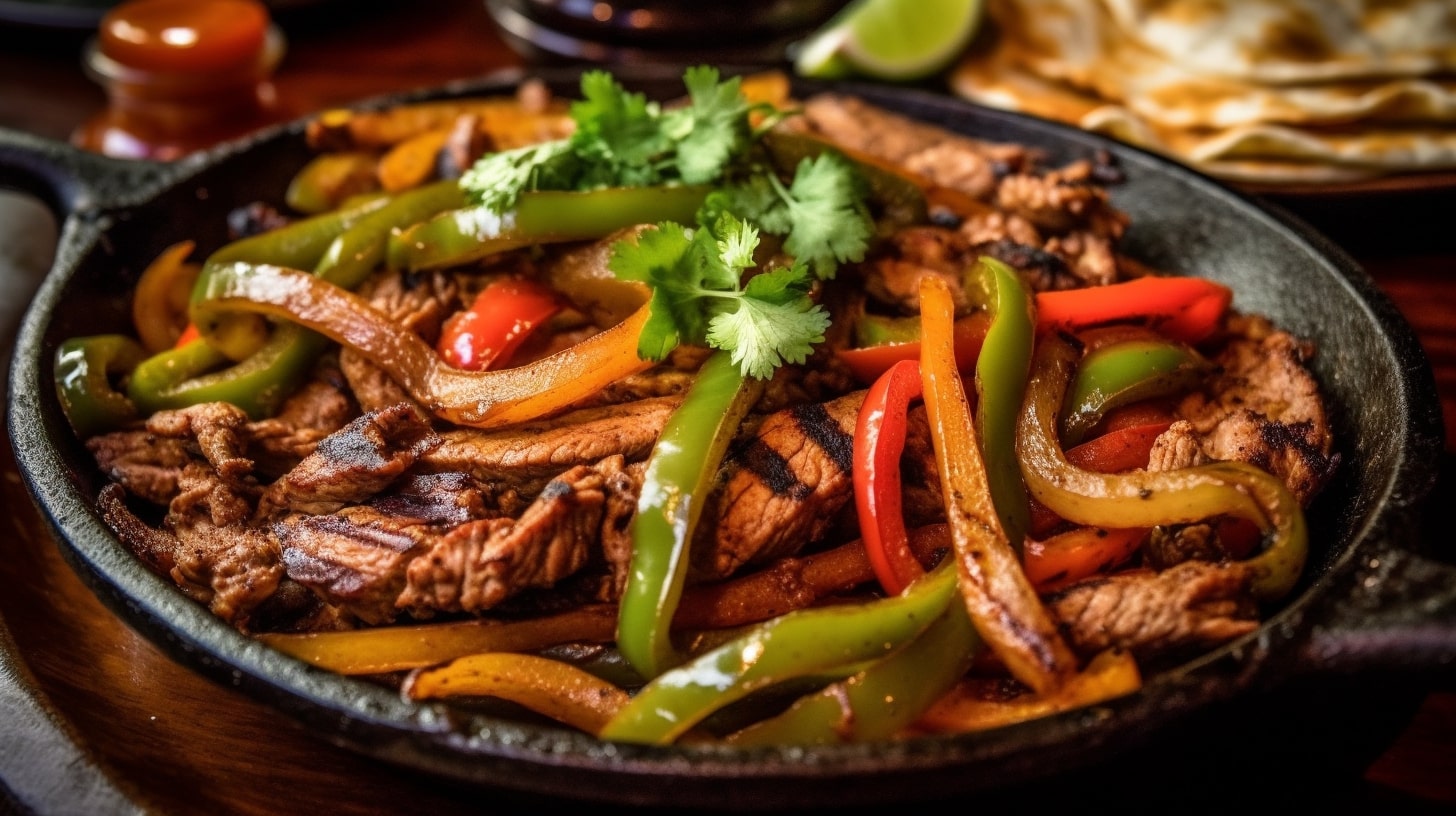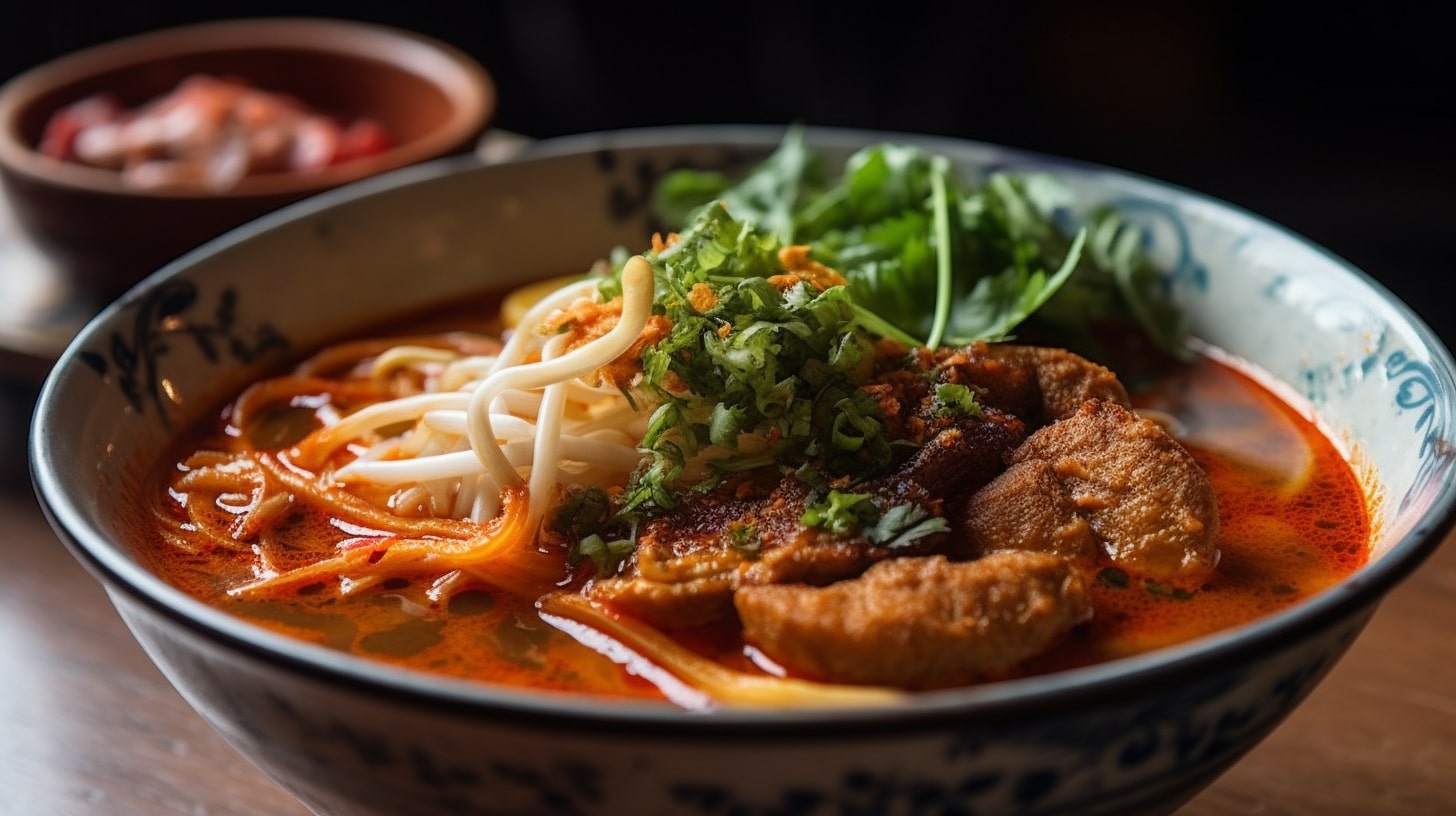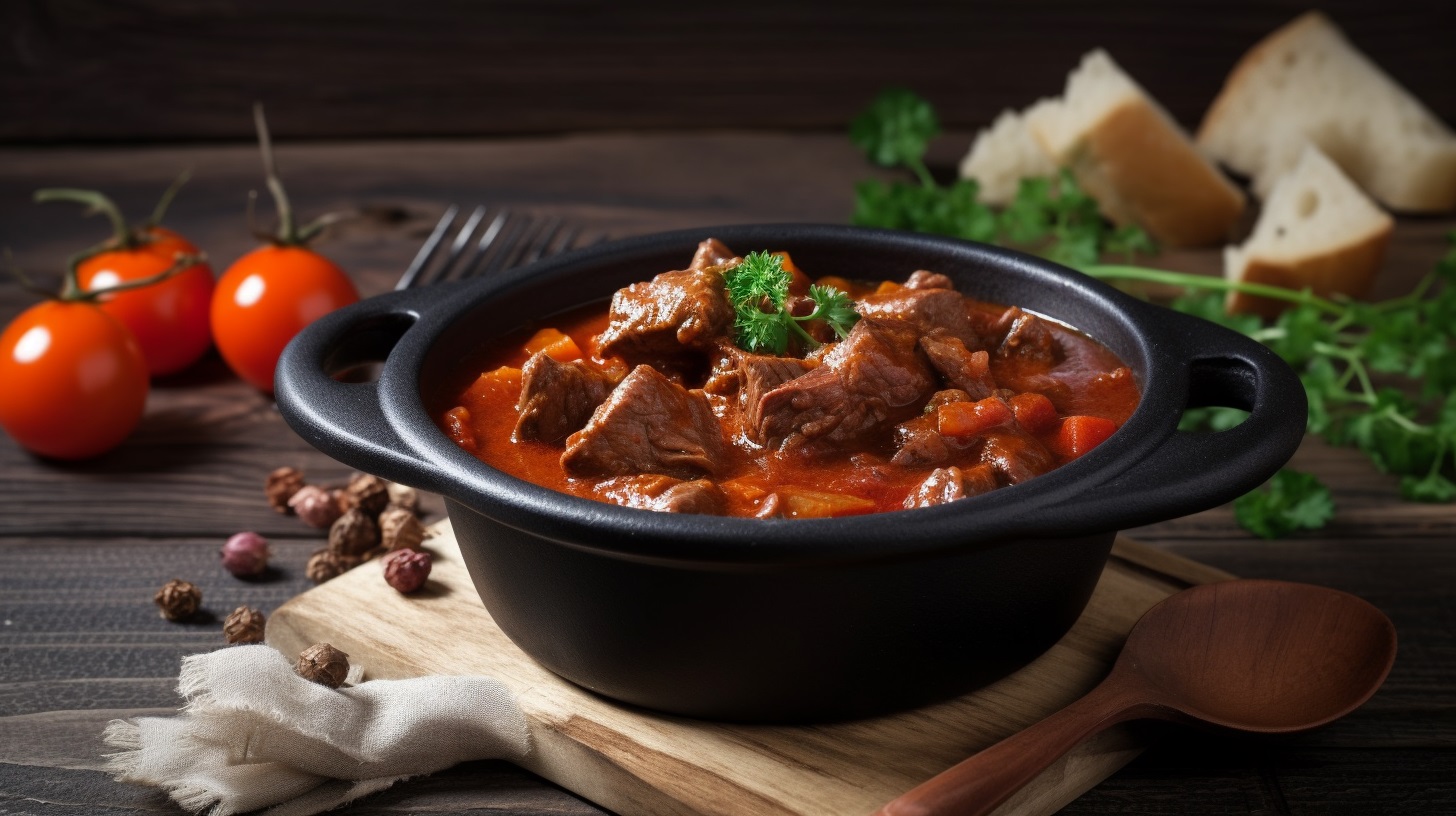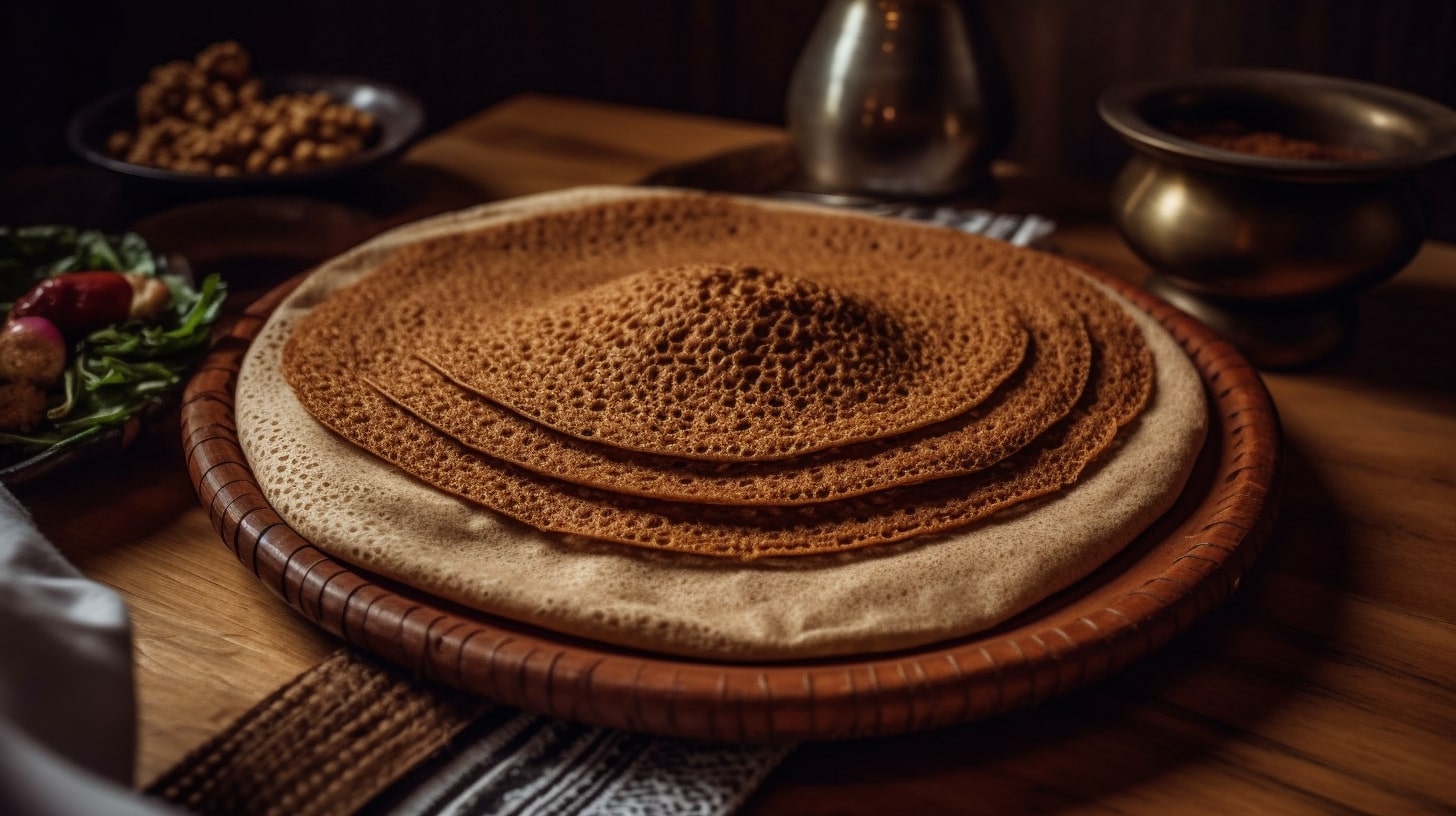Goulash is a comforting and flavorful stew that originated in Hungary. This iconic dish has gained popularity around the world for its rich flavors, tender meat, and warming spices. In this article, we will explore the history of goulash, its key ingredients, the traditional cooking process, and tips for making a delicious goulash at home.
1. Introduction
Goulash, also known as “gulyás” in Hungarian, is a traditional dish that holds a special place in Hungarian cuisine. It is a hearty stew that combines tender chunks of meat, vegetables, and a blend of aromatic spices to create a dish that is both satisfying and comforting.
2. The History of Goulash
Goulash has its roots in Hungary, where it has been enjoyed for centuries. Originally, goulash was a dish prepared by Hungarian shepherds who cooked meat slowly over an open fire in a cauldron. Over time, the recipe evolved, and goulash became a staple in Hungarian households and an important part of the country’s culinary heritage.
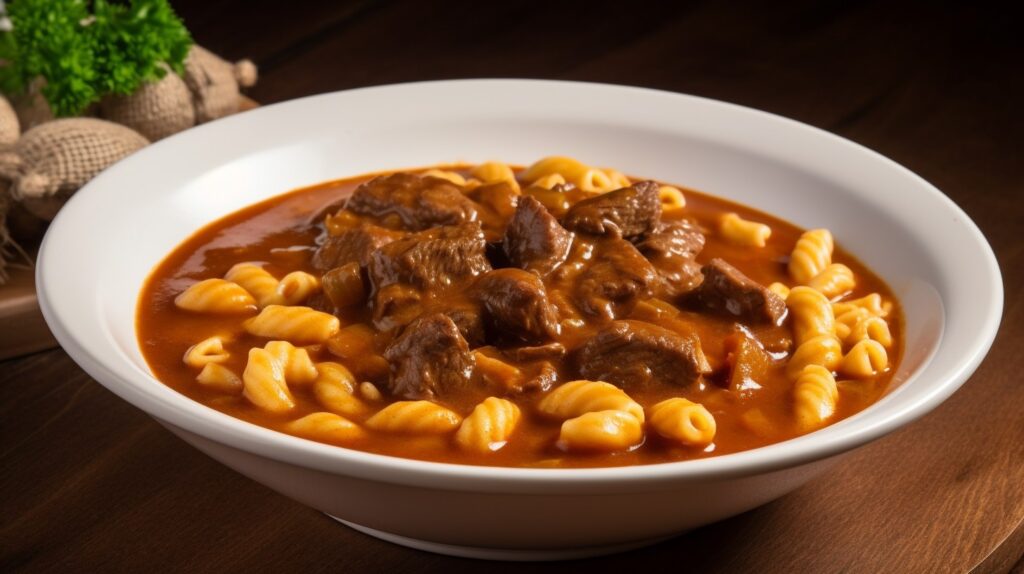
3. Key Ingredients and Flavors
3.1 Meat
gulyás traditionally uses beef as the main protein. The meat is typically cut into cubes and cooked until it becomes tender and succulent. However, variations of goulash can be made with other meats such as pork, veal, or even game meats like venison.
3.2 Paprika
Paprika is the star spice in goulash, adding a distinctive flavor and vibrant red color to the dish. Hungarian paprika is known for its rich and robust taste, ranging from mild to hot. The type of paprika used can greatly influence the flavor profile of the goulash.
3.3 Vegetables
Onions, bell peppers, and tomatoes are commonly used vegetables in gulyás. They add depth of flavor, sweetness, and a touch of acidity to balance the richness of the meat and spices.
3.4 Caraway Seeds
Caraway seeds are another essential ingredient in gulyás. They provide a unique earthy and slightly sweet flavor that complements the other spices and adds a distinctive Hungarian touch to the dish.
4. Cooking Process
4.1 Sautéing the Onions
To start the goulash, onions are sautéed in a pot until they become soft and translucent. This step helps to build the flavor base of the stew.
4.2 Browning the Meat
The meat is then added to the pot and seared until it develops a rich, caramelized crust. This step adds depth of flavor and enhances the texture of the meat.
4.3 Adding Spices and Vegetables
Once the meat is browned, spices such as paprika, caraway seeds, and garlic are added to the pot, infusing the stew with their aromatic flavors. The vegetables, including bell peppers and tomatoes, are also added at this stage.
4.4 Simmering and Slow Cooking
After the spices and vegetables are added, the goulash is simmered slowly over low heat. This allows the flavors to meld together, the meat to become tender, and the stew to thicken.
4.5 Adjusting the Seasoning
Throughout the cooking process, it is important to taste and adjust the seasoning as needed. This ensures that the goulash has a well-balanced and flavorful taste.
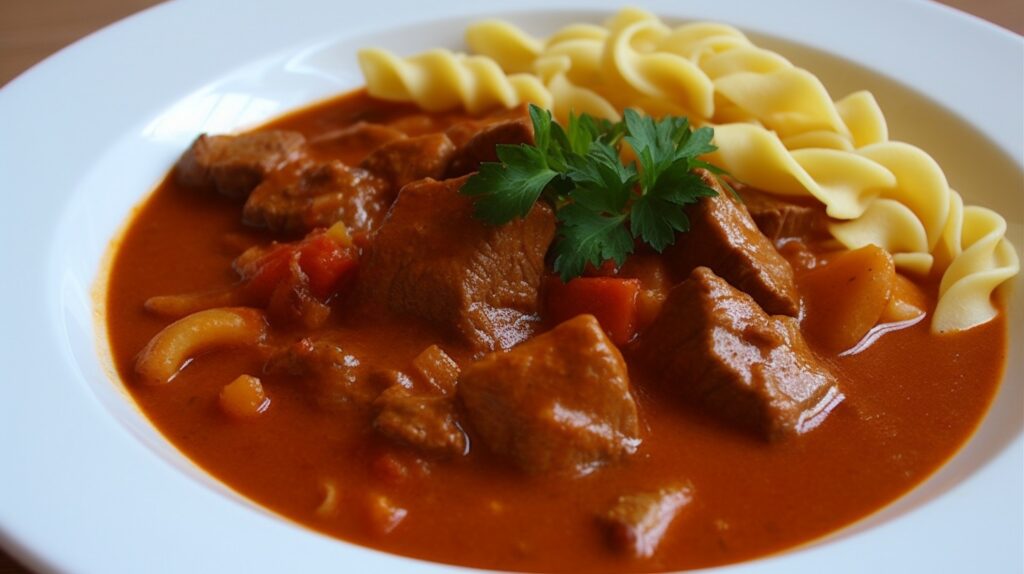
5. Making Goulash at Home
Creating a delicious gulyás at home is a rewarding experience that allows you to savor the authentic flavors of this Hungarian classic. Here is a simplified recipe for you to try:
5.1 Homemade Goulash Recipe
Ingredients:
- 1 kg beef, cut into cubes
- 2 large onions, chopped
- 2 bell peppers, sliced
- 4 tomatoes, diced
- 3 cloves of garlic, minced
- 2 tablespoons Hungarian paprika
- 1 teaspoon caraway seeds
- Salt and pepper to taste
- 2 tablespoons vegetable oil
- 500 ml beef broth
- Fresh parsley for garnish
Instructions:
- Heat the vegetable oil in a large pot over medium heat. Add the onions and sauté until they become soft and translucent.
- Add the beef cubes to the pot and brown them on all sides.
- Sprinkle the paprika, caraway seeds, minced garlic, salt, and pepper over the meat and onions. Stir well to coat the meat with the spices.
- Add the bell peppers and tomatoes to the pot, and pour in the beef broth.
- Bring the mixture to a boil, then reduce the heat to low. Cover the pot and let the goulash simmer for 2-3 hours, or until the meat becomes tender and the flavors have melded together.
- Taste and adjust the seasoning if necessary.
- Serve the goulash hot, garnished with fresh parsley. It pairs well with crusty bread or traditional Hungarian dumplings.
Conclusion
Goulash is a beloved Hungarian dish that brings together tender meat, aromatic spices, and hearty vegetables in a comforting stew. With its rich flavors and cultural significance, gulyás continues to be cherished both in Hungary and across the globe. Whether enjoyed in a cozy Hungarian tavern or prepared at home, goulash offers a delightful taste of Hungarian culinary heritage.
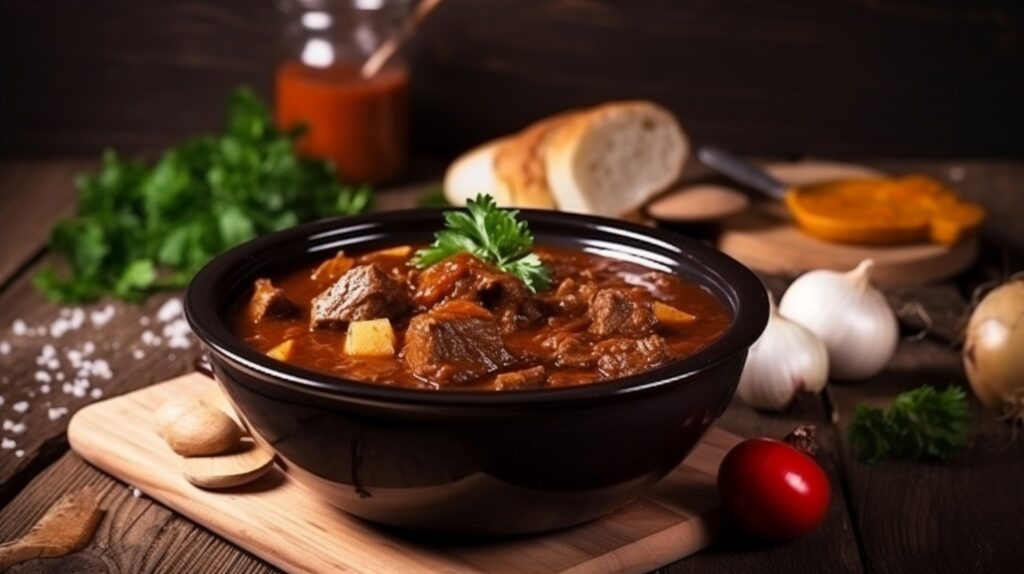
FAQs
- Can I make goulash ahead of time? Yes, goulash actually tastes even better the next day as the flavors have had time to develop and meld together. You can make a larger batch and store it in the refrigerator for up to three days or freeze it for longer-term storage.
- Can I use a different type of meat in goulash? While beef is the traditional choice for goulash, you can experiment with other meats such as pork, veal, or even game meats like venison. Just ensure that the meat you choose is suitable for slow cooking and can become tender when simmered for an extended period.
- Can I make a vegetarian version of goulash? Absolutely! You can create a delicious vegetarian goulash by replacing the meat with hearty vegetables like mushrooms, potatoes, and carrots. Adjust the cooking time accordingly to ensure that the vegetables are cooked through and tender.
- What is the best side dish to serve with goulash? Goulash pairs well with a variety of side dishes, such as crusty bread, traditional Hungarian dumplings called “nokedli,” or simple boiled potatoes. These accompaniments help to soak up the flavorful sauce and add an extra element of satisfaction to your meal.
- Can I freeze goulash? Yes, goulash freezes well. Allow it to cool completely, then transfer it to airtight containers or freezer bags. Label and date them before storing in the freezer for up to three months. Thaw and reheat gently on the stovetop or in the microwave when ready to enjoy.
